A brief history of turn-of-the-century Viennese art and design
Birth of the Cool
-
The building's facade
<em>© Wolfgang Thaler / Secession</em>
-
The building's dome
<em>© Wolfgang Thaler / Secession</em>
-
Detail from Klimt's Beethoven frieze at the Secession building
<em>© Secession</em>
-
Klimt's Beethoven frieze inside the Secession building
<em>© Oliver Ottenschläger / Secession</em>
-
Palais Stoclet: 1906 von Josef Hoffmann erbaut. Gesamtansicht.
<em>© ÖNB</em>
-
Palais Stoclet: 1906 von Josef Hoffmann erbaut. Halle.
<em>© ÖNB</em>
-
Ausstellung 1903: In der Mitte Brunnen von Josef Hoffmann, Plastiken von R. Luksch.
<em>© ÖNB</em>
-
Eingangstor in der Friedrichstrafle. Aufnahme leicht von rechts. 2. Ausstellung, mit dem von Olbrich gestalteten Plakat an den Eingangst¸ren.
<em>© ÖNB</em>
-
4th Secession exhibition in 1899
<em>© ÖNB</em>
-
Koloman Moser
<em>© ÖNB</em>
-
Cabinet by Dagobert Peche, 1913
<em>© MAK / Georg Mayer</em>
-
Tea set by Josef Hoffmann, 1928
<em>© MAK / Katrin Wißkirchen</em>
-
Brooch by Dagobert Peche, 1919
<em>© MAK / Katrin Wißkirchen</em>
-
Fabric Length “Hat Feather” by Felice Rix-Ueno, ca. 1922
<em>© MAK / Georg Mayer</em>
-
Cabinet by Koloman Moser, 1903
<em>© MAK / Gerald Zugmann</em>
-
Detail from Klimt's Beethoven frieze at the Secession building
<em>© Oliver Ottenschläger / Secession</em>
-
Josef Hoffmann
<em>© Wikimedia Commons</em>
-
Feathered cloche, 1920
<em>© ÖNB</em>
-
Dame in Pyjama, entworfen von Eduard Josef Wimmer-Wisgrill f¸r die "Wiener Werkst‰tte"
<em>© ÖNB</em>
-
Gustav Klimt in 1908
<em>© ÖNB</em>
-
Glasfenster nach Entwurf von Koloman Moser im Leseraum.
<em>© ÖNB</em>
This year, as the centennial of the First World War draws near, Vienna at the turn of the 20th century stands squarely in the historical spotlight. The center of the Austro-Hungarian Monarchy—where fateful decisions of war and peace were made in 1914—was a bustling multicultural metropolis at the time, and, at two million inhabitants, one of the five largest cities in the world. In addition to its recognized political role during the period, the Danube capital of the early 1900s has long been celebrated for playing an instrumental part in the birth of modernism. The cultural struggle between tradition and modernity fought on Viennese soil left no artistic stage untouched, least of all the fine and decorative arts. Today, the impact of this unique cultural outburst can still be experienced far beyond Austrian borders.
To The Age Its Art, To Art Its Freedom
Due to a comparatively late introduction to industrialization and modern consumerism, at the Fin de siècle (“end of century”), Vienna was only just beginning to grapple with the full impact of modernity in all its facets. Progressive artists and architects, in particular, felt a deep dissatisfaction with historicist solutions to the aesthetic problems that were so strikingly manifested in grand Ringstraßen architecture and on the lush canvases of academic painters like Hans Makart—but also present in the decoration of private apartments and the production of everyday consumer goods.
In response, in 1897, a group of artists bent on artistic renewal—including such illustrious figures as Gustav Klimt, Koloman Moser, andJosef Hoffmann—founded the Vienna Secession. The reform movement created a forum to question tradition through the display and debate of modern aesthetics, and within its first two years—thanks to financial backing from steel magnate Karl Wittgenstein (the father of philosopher Ludwig Wittgenstein)—had established an exhibition building and the journal Ver Sacrum (“holy spring”). At first, organic twists and naturalistic twirls so characteristic of German Jugendstil and French and Belgian Art Nouveau also prospered in the Habsburg city. Soon, however, the creative avant-garde embraced a more restrained, geometric style, as practiced by Charles Rennie Mackintosh in Glasgow and Frank Lloyd Wright in the U.S. The architect Josef Maria Olbrich’s Secession building in the heart of Vienna demonstrates this turn with great self-confidence—and perhaps just as ostentatiously as the neighboring Ringstraße. Reminiscent of Ancient Egyptian temples, the exhibition hall brought painting and sculpture to a measured use in the delicate decoration on its brilliantly white façade and was topped off by nothing less than a glistening, gold-leaf dome. Golden letters on the architrave above the entrance read: “To the age its art, to art its freedom.”
These words by art critic Ludwig Hevesi served the Vienna Secession’s central demand for artistic liberty. Rather than confirming the traditional view of painting and sculpture as superior art forms, the new movement aimed to promote all the arts as equal—and equally important in achieving creative union.
For in their practice, the Secessionists desired to produce a Gesamtkunstwerk, or total work of art. The term, used earlier by the composer Richard Wagner to describe his all-encompassing approach to musical drama, means a concerted and thus elevated performance within and across the fine and decorative arts, architecture, landscape gardening, fashion, and jewelry design. From the wall decorations and the light fixtures to the coat hangers and the individual inkstand, everything had to be specially designed and custom-made for its intended location. This overarching stylistic principle pertained to the design of interiors and everything they contained, their architectural shells as much as their surrounding landscapes, not to mention the residents’ outfits from head to toe. Despite the proclaimed sisterhood among the arts, though, the architect saw himself as the master planner who brought all creative efforts together as one ensemble.
The Wiener Werkstätte: Manufacturing the Gesamtkunstwerk
In pursuit of the Gesamtkunstwerk ideal, in 1903, Josef Hofmann, Koloman Moser, and financier Fritz Wärndorfer founded the Wiener Werkstätte, a firm that collaborated with outside artists and manufacturers on projects large and small. The firm produced a wide array of luxurious goods for showroom sale as well as for inclusion in substantial architectural commissions. Its repertoire included painted and glazed ceramic figures by Michael Powolny; colorful Bohemian glass stemware by Otto Prutscher; delicate jewelry sets with cabochon gemstones by Carl Otto Czeschka; expressionistic postcards by Oskar Kokoschka; and embroidered gowns by Eduard Josef Wimmer-Wisgrill, tailored with a high waist to free the modern female figure from the traditional constrictions of corsetry. Notably, some of the collaborating Viennese manufacturers—including J. & L. Lobmeyr, Augarten Porcelain, and Joh. Backhausen & Söhne—still exist today and continue to produce original designs from the era.
Sanatorium Purkersdorf (1904-1905) and Palais Stoclet (1905-1911) survive as key examples of the enterprise’s grand commissions—the likes of which leave no detail, however minor, untouched. The Sanatorium was built for Victor Zuckerkandl on the western outskirts of Vienna to house a fashionable health spa. Palais Stoclet, a private mansion for Adolphe Stoclet that was originally intended for Viennese soil, resides on carefully landscaped grounds in Brussels. (Zuckerkandl and Stoclet, like Wittgenstein and Wärndorfer, were among a new class of arts patrons, often families with a Jewish background, who had made their fortunes in industry, banking, and finance. These benefactors and clients enabled the creative elite to pass by the stylistically notoriously conservative monarchy in their quest for private commissions.)
Both the Purkersdorf refuge and the Brussels residence were furnished completely by the Wiener Werkstätte and featured some of the most important works of its founders and collaborators. Moser’s contributions at serene Purkersdorf, for instance, included a now iconic cubical armchair design featuring a black and white, chessboard-style, woven cane seat bordered on three sides by a beech wood frame. Similarly, the floor-to-ceiling marble-clad walls of Palais Stoclet’s lavishly furnished dining room showed off a mosaic frieze by Klimt that is today considered one of his greatest achievements.
The dazzling range of objects produced by Hoffmann and his colleagues testifies to the quality and diversity of Vienna’s creative talent at the time. It also masks the fact that the aesthetically driven company was hardly a profitable venture, and it faced its share of critical and creative opposition. Shortly before the outbreak of World War I, the expense of running the Wiener Werkstätte drove Wärndorfer into personal bankruptcy and almost caused the company’s collapse. Refinancing and the creative reinvigoration initiated by artist Dagobert Peche helped it survive—at least until its ultimate dissolution in 1932.
Against Ornamentation
The architect Adolf Loos was perhaps the fiercest and most outspoken critic of the Wiener Werkstätte and the company’s prescriptive style regime. In his essay “Ornament and Crime,” Loos lauds plainness in furniture and product design and calls ornamentation an immoral waste of resources. Modern culture, he argues, lives not in an oppressive Gesamtkunstwerk, but in versatile, undecorated simplicity. In another essay, “The Poor Little Rich Man,” Loos mocks an imaginary architect who scolds his client for a shocking lack of taste. The man wears a pair of custom-made embroidered slippers outside the bedroom for which they are solely intended. Impossible!
Similar to his writings, Loos’ own architectural accomplishments illuminate his belief in simple elegance. Propagating a modern architectural style devoid of overt ornamentation, he acted on the maxim that exteriors owed restraint to the public view while interiors were free to cater to personal aesthetic preferences. Contrary to his good intentions to leave the public undisturbed, however, Loos caused a huge scandal when his novel approach openly broke with conventional taste: the Looshaus, for example, a modern store for the gentlemen’s tailors Goldman & Salatsch, was called a “dung crate” and a “grain elevator” when its austere façade debuted in the city center in 1911.
For interiors, Loos liked to source from a pre-existing range of objects rather than designing everything from scratch. He was especially fond of English furniture and introduced its comfortable elegance to Viennese homes. Pieces used in his spaces are sometimes attributed to Loos alone, though they spring from a history of collaboration and adaptation. One favorite item was a simple and graceful occasional table sporting a circular top with lobed edges on a circular tray supported by six or eight legs. The legs echo 18th century cabriole legs—of course, in keeping with Loos’ values, they lack the typical decorative carving—and they have earned this table the name Elefantenrüsseltisch or “elephant trunk table.” Earlier versions appeared in England before the Viennese cabinetmakers Friedrich Otto Schmidt presented an example at a Viennese decorative arts exhibition in 1900. Wolfgang Bauer, owner of the Viennese gallery Bel Etage, explains: “The elephant trunk table was designed by Max Schmidt and work master Berka, probably with the assistance of Adolf Loos.” Since then, the table has enjoyed lasting success, and it is still manufactured by Friedrich Otto Schmidt.
Living Art to the Fullest
Today, culture, tourism, and business in Vienna continue to center on a past moved by the struggle for artistic renewal between historicism and modernism; from the Secession to the Wiener Werkstätte; for the Gesamtkunstwerk and against ornamentation. No doubt, the enduring interest in Viennese Jugendstil—art historically referred to properly as Seccessionsstil—may be partially attributed to the promotion of contemporary tourism organizations, curatorial assignments, and an active secondary trade. The violent global dispersal of the contents of Viennese households during the Nazi regime and the visibility of today’s restitution cases are additional factors. Ultimately, however, the stunning oeuvres of Hoffmann, Loos, and their contemporaries continue to resonate because their efforts at cultural and aesthetic reform touched every aspect of daily life. Shaping modern Vienna was everything and all at once: the talk of smoky cafés and salons, the critical print hot off the press, golden portraits and silver brooches, flowing reform dresses and imaginary bedroom slippers, artfully-designed private villas and modern department stores. In short, for a brief period in the early 1900s, when the experience of modern life in this city was as dark, rich, and flavorful as its Mocca espresso, Vienna lived art to the fullest. Feel how it still makes your heart beat!
To find out more, visit the new permanent exhibition, Vienna 1900, showcasing Fin de Siècle Viennese art and design on display now at the MAK, the Museum of Applied Arts in Vienna.
-
Text by
-
Martina Grünewald
Martina studied design management and history at Parsons and Bard in New York before earning a PhD in design history and theory at Vienna’s University of Applied Arts. In addition to her writing, she is also director of Vienna’s Tony Subal Gallery.
-
Designbegeisterte hier entlang
Schwarze italienische Modell Willow Armlehnstühle aus Eschenholz von Charles Rennie Mackintosh, 1970er, 2er Set
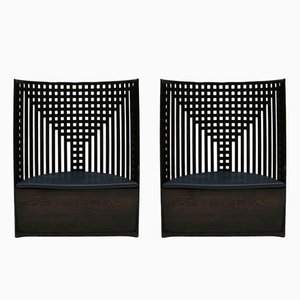
Armlehnstühle von Josef Hoffmann für Wiener Werkstätte, 1905, 2er Set
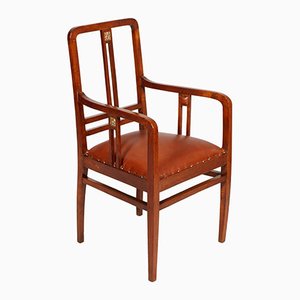
Antiker Wiener Jugendstil Wandschirm

Deckenlampe von Josef Hoffmann, 1900er

Österreichischer Jugendstil Tisch aus Massivem Nussholz von Wiener Werkstätte, 1900er

Antiker Sessel von Josef Hoffmann für Wiener Werkstätten

Italienische 292 Hill House 1 Stühle aus Esche & Sitz aus Baumwolle von Charles Rennie Mackintosh, 1960er, 2er Set

Cognacfarbenes Vintage Palais Stoclet Ledersofa von Josef Hoffmann für Wittmann
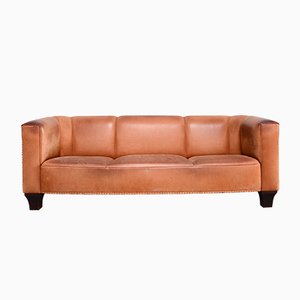
Cognacfarbener Vintage Palais Stoclet Ledersessel von Josef Hoffmann für Wittmann

Italienische Mid-Century moderne Hill House 1 Stühle von Charles Rennie Mackintosh für Cassina, 1973, 4er Set
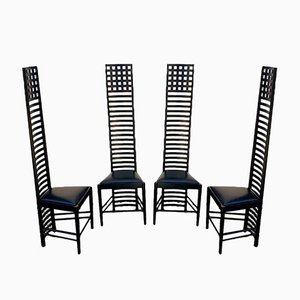
Armlehnstühle in Schwarz & Weiß von Wiener Werkstätten, 1950er, 4er Set

Stuhl von Charles Rennie MacKintosh für Cassina
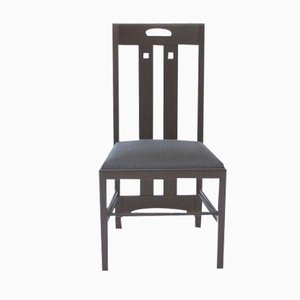
Antikes Bugholz Sofa von Josef Hoffmann für Thonet
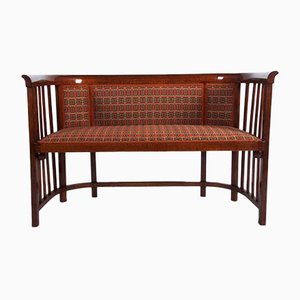
Bugholz Sitzbank von Josef Hoffmann, 1900er

Modell 561 Parkbank von Josef Hoffmann, 1900er
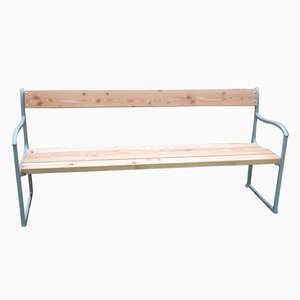
Sitzmaschine Armlehnstuhl von Josef Hoffmann für J. & J. Kohn, 1908
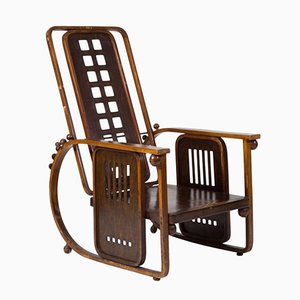
Armlehnstuhl von Josef Hoffmann für J. & J. Kohn Wien, 1900er
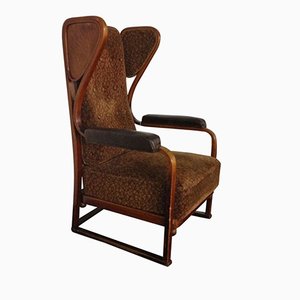






















 The Secession building in 1901
© Österreichische Nationalbibliothek
The Secession building in 1901
© Österreichische Nationalbibliothek
 Drawing for the Palais Stoclet mosaic frieze by Gustav Klimt, 1910/11
© MAK / G. Mayer
Drawing for the Palais Stoclet mosaic frieze by Gustav Klimt, 1910/11
© MAK / G. Mayer
